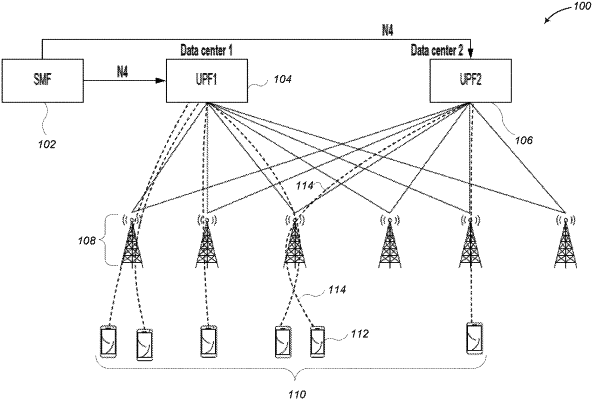| CPC H04W 28/088 (2023.05) [H04W 28/0908 (2020.05)] | 14 Claims |

|
1. A system, comprising:
a memory that stores computer instructions; and
a processor that executes the computer instructions to perform actions, the actions including:
maintaining a plurality of load thresholds for each user plane function (UPF) of a plurality of UPFs in a cellular telecommunication network, wherein:
the plurality of UPFs serve as anchor points between user equipment (UE) in the cellular telecommunication network and a data network (DN);
each UPF of the plurality of UPFs is a virtual network function responsible for interconnecting packet data unit (PDU) sessions between the user equipment (UE) and the DN by anchoring the PDU sessions on individual UPFs;
the plurality of load thresholds for each UPF depend on a respective capacity of each UPF to have PDU sessions anchored thereon; and
an amount of load put on a UPF by a UE appearing in the cellular telecommunication network is assumed to be identical for all UEs appearing in the cellular telecommunication network;
receiving a request to anchor on a UPF a PDU session of a new UE newly appearing on the cellular telecommunication network;
selecting a UPF of the plurality of UPFs on which to anchor the PDU session based on whether traffic of the PDU session is identified as low latency and a location of the new UE; and
anchoring the PDU session of the new UE to the selected UPF.
|